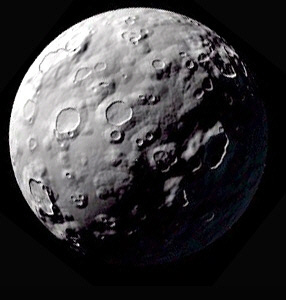 At the core of RenderMan is the versatile RenderMan
Shading Language. What follows is a discussion of some related key concepts
which may benefit users of RenderMan for Maya. Because Maya Materials are
automatically converted this knowledge isn't absolutely required, but it is
valuable for understanding how shaders are implemented in RenderMan and will be of benefit for those who wish to create well-executed shaders.
At the core of RenderMan is the versatile RenderMan
Shading Language. What follows is a discussion of some related key concepts
which may benefit users of RenderMan for Maya. Because Maya Materials are
automatically converted this knowledge isn't absolutely required, but it is
valuable for understanding how shaders are implemented in RenderMan and will be of benefit for those who wish to create well-executed shaders.
All shaders answer the question, "What's going on at this point?"
That is, a shader determines the color of a point by running algorithms to
gather information about
certain scene elements. The RenderMan Shading Language
allows shaders to ask very complicated questions about what is happening at any
given point. With the RenderMan Shading Language, shaders can be created
without limitations, familiar shading models can be extended, or totally unique
shaders can be developed. Physical properties of materials can be simulated or
flat out defied in order to deliver whatever look is desired. The effects of
studio lighting can be constructed by building lights that have special lenses, concentrators, flaps, or
diffusers. Material types can also be
combined, simulating the many coats of paint or finish applied to a surface. Remarkably realistic images can be produced with a few fairly simple shapes
which have shaders that are asking the right questions.
Shaders can be generated in a number of ways. RenderMan for Maya renders Maya
Materials and shaders created by Slim. Alternatively, shaders can be written
using the RenderMan Shading Language for custom purposes, which can then be
imported into RenderMan for Maya. Either way, high-quality shaders can be
created, no matter which workflow is preferred.

Custom RenderMan
shaders can be imported into RenderMan for Maya. Once imported into Maya the
parameters of these custom RenderMan shaders can be animated, but other Maya
Materials cannot be wired into them. These RenderMan shaders can be
connected to a top-level shading group, but these connections are
constrained by the three available slots: surface, displacement, and volume.
RenderMan understands five types of shaders:
Surface Shader: Surface shaders are attached to all geometric
primitives and are used to model the optical properties of materials from
which the primitive was constructed. A surface shader computes the light
reflected in a particular direction by summing over the incoming light and
considering the properties of the surface.
Displacement
Shader: Displacement shaders change the position and/or
normals of points on the surface and can be used to place bumps on surfaces.
Light Shader: Lights may exist alone or be attached to
geometric primitives. A light source shader calculates the color of the
light emitted from a point on the light source towards a point on the
surface being illuminated. A light will typically have a color or spectrum,
an intensity, a directional dependency, and a fall-off with distance.
Volume Shader: Volume shaders modulate the color of a light ray
as it travels through a volume. Volumes are defined as the insides of solid
objects. The atmosphere is the initial volume defined before any objects are
created.
Imager Shader: Imager shaders are used to program pixel
operations that are done before the image is quantized and output.
RenderMan for Maya automatically translates Maya Materials, including
associated projections. You might find that, in certain cases, these RenderMan
shader space attributes are helpful (e.g. when using imported custom RenderMan
Shaders or when an esoteric shader space like "NDC" is required).
Shader space is used to define how 3D procedural shaders and 2D projections
are applied to objects in a scene. This is in contrast to using the natural
parameterization of a surface (UV mapping) to map 2D textures onto objects. A 3D
procedural shader emanates in three dimensions. Such shaders
are often called solid shaders. Naturally, a point in 3D space must be
given to a solid shader as the center starting point from which the shader
expands. To define this point we use coordinate systems.
Now any node in Maya (object, light, etc.) can be used to declare a coordinate
system for a procedural shader, but it turns out that the RISpec already
contains a number of quite helpful predeclared shader spaces:
 At the core of RenderMan is the versatile RenderMan
Shading Language. What follows is a discussion of some related key concepts
which may benefit users of RenderMan for Maya. Because Maya Materials are
automatically converted this knowledge isn't absolutely required, but it is
valuable for understanding how shaders are implemented in RenderMan and will be of benefit for those who wish to create well-executed shaders.
At the core of RenderMan is the versatile RenderMan
Shading Language. What follows is a discussion of some related key concepts
which may benefit users of RenderMan for Maya. Because Maya Materials are
automatically converted this knowledge isn't absolutely required, but it is
valuable for understanding how shaders are implemented in RenderMan and will be of benefit for those who wish to create well-executed shaders. ![]()